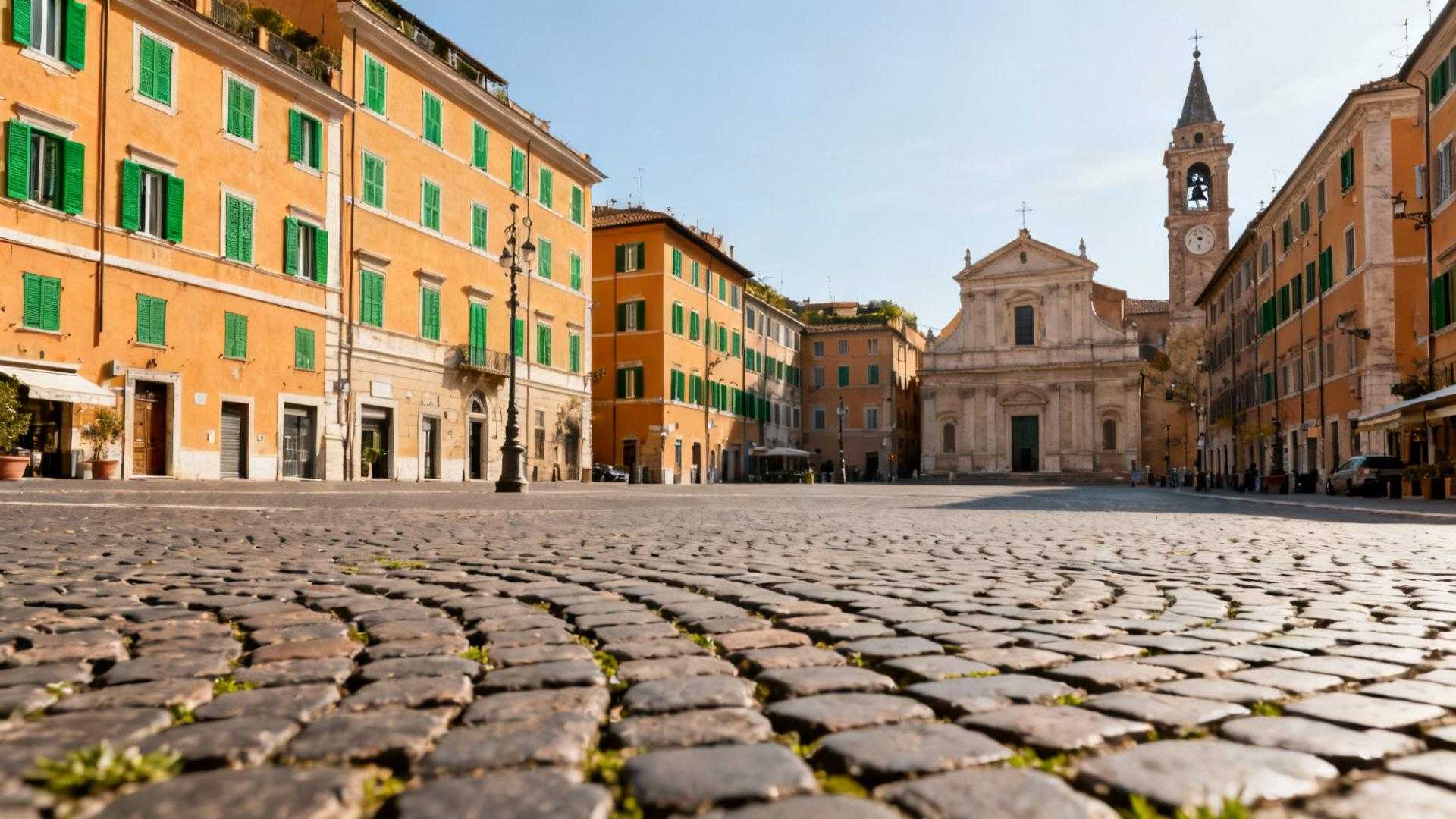Dawn breaks over Piazza della Rotonda as tourists sleep off their Colosseum fatigue. A Roman grandmother in black dress enters the neighborhood church for 7am mass—one of 2.8 million locals whose Sunday rituals follow patterns unchanged since the 1950s. While 10 million annual visitors chase Instagram angles at Trevi Fountain, Rome’s true soul emerges in Sunday traditions tourists never witness: sacred Jubilee masses, family passeggiata through quiet piazzas, €2 neighborhood café rituals where locals still outnumber cameras. The 2025 Jubilee Year intensifies these contrasts, drawing 35 million pilgrims while Romans retreat deeper into centuries-old customs.
The sacred Sunday morning Rome tourists never see
Before tourist buses arrive at 9am, Romans fill neighborhood churches for centuries-old Sunday mass traditions. The 2025 Jubilee Year intensifies this practice with special observances at lesser-known basilicas beyond St. Peter’s, which attracts 80,000 pilgrims weekly. Church bells echo through empty cobblestone streets at 6:30am, calling 545,000 faithful who’ve already crossed the Holy Door this year. Elderly Romans in formal Sunday dress walk past shuttered souvenir shops, carrying worn missals their grandmothers used.
The scent of incense mixes with morning espresso from nearby bars that open exclusively for post-mass locals. These intimate services happen in Trastevere’s Santo Spirito, Testaccio’s San Francesco a Ripa, where tourists never venture. Vienna’s centuries-old café culture mirrors this sacred rhythm, where locals protect morning rituals from tourist intrusion.
Where Romans actually gather after mass—and what they do there
The post-mass passeggiata ritual unfolds in neighborhoods tourists skip entirely. Families stroll through Prati’s quiet squares, children in Sunday clothes, locals greeting each other with unhurried warmth that contrasts tourist chaos. This procession follows routes mapped by generations: from Santa Maria in Trastevere down Via della Lungaretta, past medieval doorways where Romans lived when pilgrims first walked these stones.
The post-mass passeggiata through Trastevere’s quiet squares
Sunday’s passeggiata begins at 11am, after early mass concludes. Roman families emerge from churches like Santa Cecilia, walking cobblestone alleys where tour groups never penetrate. Children wear formal clothes saved for Sundays, elderly couples link arms, and conversations happen in Roman dialect tourists wouldn’t understand. The pace remains deliberately slow—a cultural meditation between sacred and social worlds.
Neighborhood cafés where €2 cappuccino rituals haven’t changed in decades
Authentic Roman café culture happens at bars locals actually use. In Prati’s Bar del Cappuccino, residents pay €1.20 for espresso consumed standing, following protocols tourists violate daily. No lingering over laptops, no photo-taking, just quick caffeine communion before continuing Sunday’s rhythm. Tel Aviv’s unspoken beach rituals share this protective quality—locals maintaining spaces tourists commodify elsewhere.
Sunday food traditions tourists pay €45 to miss entirely
While visitors queue for €45 mediocrity in Piazza Navona, Romans gather for three-hour Sunday pranzo in neighborhoods like Testaccio. These marathon lunches cost €15-20 per person at family trattorias like Da Valentino, where nonnas still roll pasta by hand. Sunday menus never change: carciofi alla romana, saltimbocca, maritozzi for dessert. Reservations happen through relationships spanning decades, not OpenTable.
The family lunch marathon at neighborhood trattorias
Sunday pranzo begins at 1:30pm sharp, lasting until 4:30pm without apology. Extended families gather at tables reserved by tradition rather than technology. Multiple courses unfold slowly: antipasti, primi, secondi, dolci, digestivi. Conversations span generations while children play between courses. These restaurants seat 40 people maximum, serving neighborhoods rather than Instagram feeds.
Pizza al taglio and trapizzino—Sunday street food locals grab between mass and lunch
Romans bridge morning mass and afternoon pranzo with authentic street food tourists ignore completely. Trapizzino al Testaccio serves €3.50 cone-shaped sandwiches filled with traditional Roman preparations. Pizza al taglio shops like Il Fornaio offer €2 slices of Roman-style thin crust. Montreal’s hidden food rituals operate similarly—accessible neighborhood traditions protected from tourist commercialization.
The Sunday afternoon ritual that reveals Rome’s soul
Park gatherings and public garden picnics occupy Romans’ Sunday afternoons while tourists rush between monuments. Villa Borghese’s local sections—away from museum crowds—host extended families reading newspapers, children playing traditional games, elderly couples sharing decades of Sunday habits. This dolce far niente philosophy transforms doing nothing into cultural practice. Romans bring thermos coffee, homemade sandwiches, and newspapers, claiming benches their families used for generations.
The contrast strikes visitors who witness it: frantic sightseeing versus Roman Sunday stillness. Marrakech’s local spice square embodies similar protective authenticity—spaces where cultural rhythm supersedes tourist convenience.
Your questions about Roman Sundays answered
How can I experience authentic Roman Sunday traditions without intruding?
Attend public mass at St. Peter’s free 8am services requiring no reservations. Walk Trastevere between 11am-1pm for passeggiata observation. Visit Mercato di Testaccio Sunday mornings for local shopping culture where Romans buy ingredients for family pranzo.
What makes 2025’s Jubilee Year different for Sunday traditions?
Special Papal masses occur throughout 2025, with the Holy Door at St. Peter’s opened exclusively during Jubilee years. Over 1.3 million pilgrims have crossed this threshold since December 2024, creating unprecedented religious energy. Restoration projects have beautified neighborhood piazzas where local Sunday traditions unfold.
How does Roman Sunday culture compare to other Italian cities?
Florence maintains more tourist-focused Sundays with markets and boutique openings. Rome’s 2.8 million residents sustain stronger traditional Sunday rhythms compared to Venice’s overwhelmed 30,000 permanent population. Milan offers more secular Sunday culture, while Rome’s religious traditions remain deeply embedded in neighborhood life.
As sunset gilds the Tiber, Romans finish their Sunday passeggiate through piazzas now filling with tourists seeking dinner. The two worlds barely intersect—one chasing monuments, the other living traditions. Church bells ring vespers while tour groups photograph fountains, each group inhabiting parallel versions of the same ancient streets.
